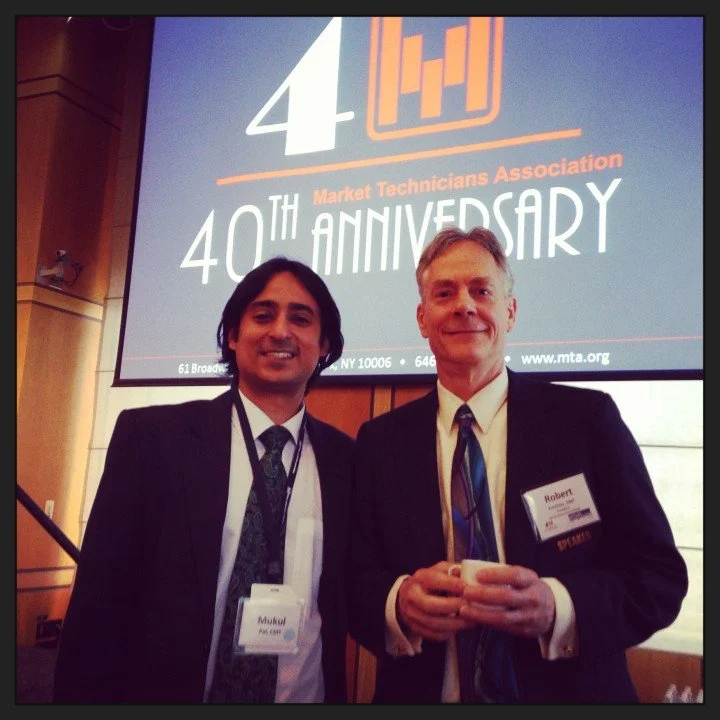ESG (Environmental, Social, and Governance) investing is here to stay. It’s naive to believe otherwise. The world is facing the consequences of environmental degradation—wildfires, floods, and melting ice caps. Arctic currents are changing, and Arctic ice is disappearing. The looming disaster might not seem visible to everyone yet, but that's because we’re trapped in a “tragedy of the commons”—where short-term thinking prevails over long-term survival. People don’t realize the urgency because it hasn’t hit them hard enough. But make no mistake—it will hurt. And when it does, governments and regulators will have no choice but to enforce ESG measures with renewed vigor. Greta and the activists are coming back stronger.
Richard Thaler's famous choice of words began the demise. Decay starts with decreasing relevance. Then science progresses, funeral by funeral (Max Planck). Behavioral finance is slowly disappearing from the CFA curriculum and has almost vanished from the asset management space. A behavioral finance fund with assets greater than $100 million with a track record longer than five years is hard to find.
In the rapidly evolving landscape of artificial intelligence (AI) and machine learning, data is not just a foundational element—it’s the lifeblood of innovation. However, it’s time to shift the conversation from merely collecting and analyzing data to the mechanisms that generate it. Data Generating Mechanisms (DGMs) are pivotal to the future of intelligence, unlocking the true potential of AI, machine learning, and predictive systems. But why are DGMs so critical, and how does mechanism thinking shape the future of innovation?
Everyone needs saving, even Jim Chanos. A man renowned for his short positions—both in the market and the one he received from Elon (if that actually happened), which I’m sure Jim would have kept as a memento. If hedge fund managers are a rare breed, then short hedge fund managers are the rarest of them all. Only a handful, like Carson Block, and Hindenburg Research, have made some "name" for themselves. And then there's Chanos, who closed his fund. He's also a professor of finance at Yale. I admire these people. I admired Prechter, who some labeled a permabear. But over time, as the market continues to defy expectations, it’s no longer just about the courage to stand alone; it’s about accepting the irrationality of the market—a phenomenon that cannot be timed. Keynes, wherever he is (heaven, hell, or somewhere in between), doesn’t even bother laughing anymore. All we hear is the echo of his thought: “I told you so!”
The investment landscape is divided between active and passive investment management. Active management involves selecting individual stocks or securities to outperform a benchmark, whereas passive management typically focuses on replicating a market capitalization index (benchmark). Over the past few decades, the growth of passive investing has outpaced active management, driven by lower fees and the difficulty many active managers face in beating their benchmarks.
I kept thinking why was excess volatility so low for Quant MFs and I reached out to a client who runs a large advisory set up and asked him. "Do you know their turnover? I have an intuition it's very high". The client said, "It's acknowledged that their turnover is very high". I had my answer for how despite more than half of the segment data showcasing negative excess volatility, the fund was actually taking excessive risk to generate its incremental alpha. Let me introduce you to the magic of turnover and why you should not touch funds with turnover higher than annually 50%.
We await SEBI's findings, yet the notion of a top Indian MF engaging in frontrunning is hardly shocking. The industry still struggles to look beyond mere performance figures, presenting the regulator with the formidable task of uncovering the truth. Several months ago, an emerging fund manager in India approached me after successful meetings with family offices, praising the analytics we developed for him. He saw it as an opportunity to present his figures through a statistical, rather than a purely performance-based, lens. We agreed to apply our statistical methods, used in our own indexes and models, to evaluate Indian mutual funds, starting with the Small Cap category—his area of focus. Among the ten funds we analyzed, Quant Small Cap was included. Given our emphasis on dissecting performance to delve into risk and attribution, Quant did not emerge as a top-rated fund, despite its stellar performance.
Passive funds have become the cornerstone of modern investment portfolios, praised for their low costs and market-wide exposure. But is there more to the story than meets the eye? Could it be that these funds, while seemingly beneficial, are facilitating practices that ultimately disadvantage the very investors they aim to serve?
Yesterday, I sat down in Toronto with a CEO of a startup for lunch. He has successfully raised money from Silicon Valley, is a globe trotter, and extremely driven and intelligent. But despite his successful, multiple exits background, he struggled to understand the difference between investing and trading. A long-term investor typically invests in Index funds for a period of more than 12 months and does not check a fancy app every minute to monitor how his Index fund is performing. This simple definition of an investor can screen out many people who think they are investors but in reality are speculative traders.
In this article part of our Clustering series, [1] [2] [3] [4] which began by identifying clusters in relative percentile ranking vs. S&P 500 component returns. We discovered that market capitalization (MCAP) was a poor variable for clustering and highlighted a growth bias. We then extended the periodicities to observe the evolution of this growth bias. Today, we conclude by compiling all these periodicities of growth bias into a single chart. This "composite of a composite" (COC) reveals a moving picture of market dynamics, reminiscent of the seminal work on curvatures by Nobel Prize winner William Sharpe.
The internet can be envisioned through a trio of metaphors that paint a vivid picture of its complex structure and the dynamics of its growth and interaction: a bow tie, a teapot, and a cuckoo. These metaphors, derived from different scholarly studies, help us explore the unique aspects of how information is organized, linked, and disseminated across the digital universe. Understanding these models is key to grasping the underlying statistical laws that govern the web and anticipating how they might evolve to reshape our informational landscape.
Hyper-personalization is on its way to transforming the world of exchange-traded funds (ETFs) with the advent of Electronic Index Funds (EIFs). This seismic shift promises to change the way we invest, bringing unprecedented levels of customization and investor-centric approaches. Hyper-personalization is becoming ubiquitous in fields such as medicine and commerce, but its entrance into finance marks a new era. The pressing question is, why is this necessary? How will it function, and how will it reshape the landscape of investment management?
Humans are naturally biased, and nothing biases us like a winner. This is a straightforward explanation of growth bias. Because humans are growth-biased, stock markets are too. You don’t need science to observe growth bias—it’s conspicuous. However, you do need science to build models that can perform well despite growth bias, meaning models capable of predicting the evolution or decay of this bias.
In the year 2000, I conducted an interview with a gentleman known as AKR, who, during a teleconference about the derivatives market in India, advised, "Never fall in love with a tool." He was responding to my fervent exposition on the analytical tools I employed to forecast market trends. His remark took me aback, challenging and cautioning me simultaneously about my reliance on these measuring devices. In the financial markets, everyone has their preferred tools—be it a scale, a sentiment gauge, an intuition. AKR’s observation was a universal caution: if you become enamoured with your tools, you are destined for failure.
This paper presents an empirical study of the S&P 500's performance over a period of 24 years, utilizing a novel approach termed "The Systemic Cluster." It diverges from traditional market analysis methods by employing annualized returns and percentile scoring in conjunction with K-means clustering to elucidate systemic patterns in stock market performance. The study's findings reveal a consistent positive drift for stocks with higher relative percentile scores, suggesting an inherent market tendency to reward winners. Additionally, the occurrence of occasional spurts in the highest decile indicates the presence of market extremities. The implications of these findings are discussed in relation to their predictive capacity for macro market trends and investment strategies.
Delphia was fined $225K by the SEC for AI washing [1]. This incident is just a glimpse of a much larger iceberg looming in the financial waters, an iceberg compounded by rising interest rates. When the tide is high, and the cost of money is zero, distinguishing between genuine innovation and slick pitch deck becomes increasingly challenging. Bias is a strange beast. When you're biased towards something, objectivity flies out the window. This explains why women, blacks, and immigrants remain underfunded at all times.
In 2007, amidst an increasing interest in the intricacies of market dynamics and human psychology, I penned "Deficient Market Hypothesis." This piece was a testament to my burgeoning quest to understand not just the mechanical underpinnings of financial markets but their psychological ones. Daniel Kahneman's pioneering work on noise and biases provided the scaffolding upon which my thoughts could climb and explore new vistas. Kahneman was not the first psychologist to systematically dissect the psychological systems at play within decision-making processes, laying bare the biases and noise that often clouded judgment, but he was the first to bring psychology to the masses.
Peter Lynch's stewardship of Fidelity's Magellan Fund from 1977 to 1990 stands as a testament to unparalleled success in mutual fund management, boasting an average annual return of over 29%. Lynch's strategy diverged from conventional value investing by embracing extensive diversification, at times holding over 1,400 positions, a stark contrast to the concentrated portfolios advocated by many of his peers. This essay draws upon Daniel Sotiroff’s analytical insights and Mukul Pal's critiques to offer a nuanced reevaluation of Lynch's investment philosophy, its inherent risks, and its implications for modern investors.
I trained Alphie on two charts of NVDA and BTC. I did not tell it what those charts were. I just gave it the time series. I told it clearly that BTC was not bitcoin. And then I asked it the following 13 questions (prompts).
In an era where AI has simplified the extraction of insights from vast datasets, the hallmark of contemporary success increasingly resides within the Data Centric Organization (DCO). Such entities not only pioneer in generating revenue through innovative services but also excel in crafting more efficient, adaptable frameworks poised to swiftly respond to market dynamics.




















